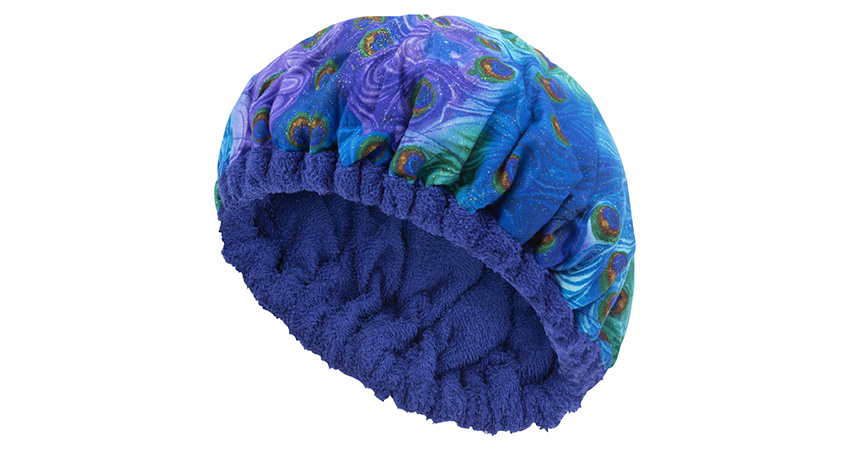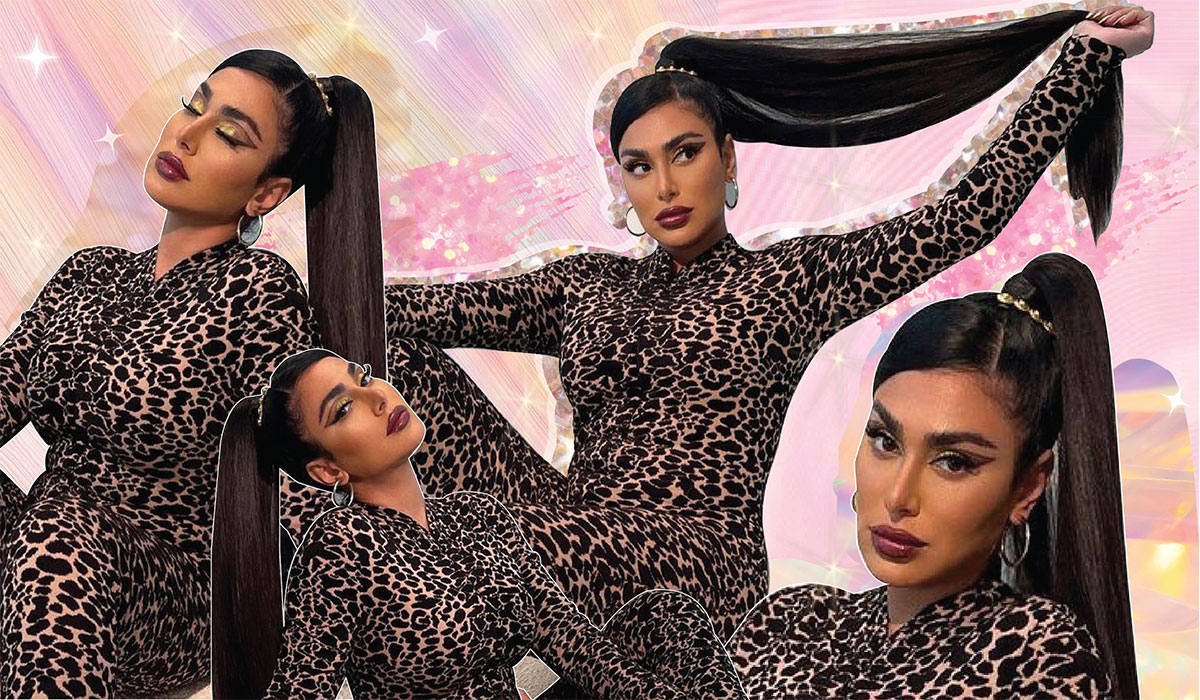What Is Low Porosity Hair? Expert Tips + The Best Hair Products

Do your locks ever feel kinda heavy after you’ve literally just washed them? Or perhaps, it feels like all of your haircare products leave an unwanted greasy residue? If that’s a yes, there’s a solid chance you have low porosity hair. It sounds science-y, but it just means your locks don’t absorb moisture that well. Unfortunately, many people have never heard the term low porosity and have no idea what it looks or feels like. Enter: this low porosity guide that brings the deets, expert tips, and low porosity hair product recommendations to your (digital) doorstep.
What is Low Porosity Hair?
*Puts lab coat on.* Every hair strand is protected by an outer layer called the cuticle. For your hair to stay healthy and hydrated, moisture must pass through the cuticle to reach the innermost layers. Here’s the catch: “Low porosity hair has a tighter sealed cuticle, which makes it tougher for water to enter,” says Ryan Pearl, celebrity hairstylist. Without enough moisture, low porosity hair types appear brittle, frizzy, and not-so-glossy.
Signs of Low Porosity Hair
View this post on Instagram
There are two ways to confirm if you have low porosity hair:
- The porosity test: Drop a single strand of (naturally shed) hair into a glass of water. If the strand doesn’t soak moisture and floats at the top, you’re dealing with low porosity. Alternatively, if the strand absorbs water and sinks to the bottom, you have high porosity hair.
- Products don’t absorb easily: Say you apply a new serum – does your hair feel heavier or perhaps greasier? Does your hair now look oily? Slow absorption is one of the main indicators of low porosity hair.
How to Treat Low Porosity Hair Types
Good news! Now that you know how to identify low porosity hair, it’s SO much easier to care for…
Low Porosity Hair Tip #1: Prioritize Products That Absorb Quickly
Before you splurge on new oils and serums, remember that haircare isn’t one-size-fits-all. Tracey Moss, a hairstylist for TV, film, and Broadway, reminds us that “People with low porosity find success with lightweight texturizing and volumizing products versus heavy oils and ultra-rich conditioners.” Keyword: lightweight. Spend on easy-to-absorb formulas that are either water-based or contain light oils like grapeseed or rosehip oil to get the most out of your money.
Low Porosity Hair Tip #2: Adopt a Less-is-More Approach
Sometimes, we slap on more products if we don’t see an improvement in our strands (#guilty). According to Moss, this is a huge no-no as unabsorbed product ends up sitting on top of our hair, weighing it down. This leads to buildup that blocks moisture from being absorbed. Instead, adopt a less-is-more approach when experimenting with new products. If the label doesn’t say it’s formulated for low porosity hair, proceed with caution by starting with a pea-sized amount and build up as needed. Oh, and remember to brush the formula through your locks to ensure it’s evenly distributed.
Posts You'll Love:
Low Porosity Hair Tip #3: Beware of Silicones, Protein & Butters
 via Giphy
via Giphy
We know how appealing the idea is to indulge your hair in rich masks, but low porosity hair types should avoid heavy ingredients like silicones, protein treatments, and butters, which are hard to absorb. These thick ingredients build up, forming a residue that coats the surface of the strands and can cut off their moisture supply.
Low Porosity Hair Tip #4: Prevent & Treat Build Up
Wondering how to eliminate that unwanted residue and product buildup? It’s easy: indulge in a weekly hair detox with a clarifying shampoo like Hello Klean’s Clarifying Scalp Soak, $34, that whisks away excess product, sweat, and oil. Moss also recommends “Regularly cleansing hair with an anti-residue shampoo to remove product buildup.” We lurve and trust Neutrogena’s Anti-Residue Shampoo, $7, to get the job done. It’s cheap, reliable, and is also a reputed treatment for deep-cleaning dreadlocks.
 Source: Hello Klean and Neutrogena
Source: Hello Klean and Neutrogena
Low Porosity Hair Tip #5: Invest in a (Cute) Heat Cap
The real Q: what about the expensive haircare goodies you’ve already purchased? Since low porosity hair types have tightly bound cuticles, using a heat cap like Hot Head’s Jeweled Hot Head, $35, will help lift the hair cuticle, making it easier for oils and moisture to seep into your locks. There’s no point in wasting any goodies on your shelf!
 Source: Hot Head
Source: Hot Head
The Best Products for Low Porosity Hair Types
1. Best Shampoo & Conditioner for Low Porosity Hair: NOU No Strip Sulfate Free Shampoo, $7 + Low Porosity Leave In Conditioner, $7
 Source: NOU
Source: NOU
Ever since we discovered Next of Us (NOU), a drugstore brand for curls, we’ve fallen in LOVE with their porosity-tailored collection. That’s why this sulfate-free duo is a no-brainer – together, it cleanses buildup and infuses moisture without weighing low porosity curls down.
 Source: Maui
Source: Maui
If you’re a straight or wavy-haired babe, look for formulas containing lightweight ingredients such as honey or glycerin that absorb into your cuticles better than oils. For example, Maui Moisture’s vegan Lightweight Hydration + Hibiscus Water Shampoo, $11, and Conditioner, $11, contain aloe vera, hibiscus water, passion fruit, and watermelon. As a result, it adds lightweight hydration without weighing low porosity strands down.
Pro tip: Dilute your conditioner with a bit of water before application, so it’s easier to absorb and less likely to weigh down your locks.
2. Best Leave-in Conditioners for Low Porosity Hair: Olaplex No. 6 Bond Smoother Reparative Styling Creme, $30 + Carol’s Daughter Monoi Repairing Conditioner, $17
 Source: Olaplex and Carol’s Daughter
Source: Olaplex and Carol’s Daughter
Leave-in conditioners are designed to infuse moisture. But low porosity hair types benefit most from LIGHT leave-ins, like Olaplex’s vegan creme. Its bond-building technology strengthens and hydrates all hair types. We’re also obsessed with the Carol’s Daughter’s formula for curly hair qweens. It’s formulated with bamboo water and monoi oil that strengthens, detangles, and packs on the H20.
3. Best Deep Conditioner for Low Porosity: Sienna Naturals Plant Power Repair Mask, $32 + Curlsmith Double Cream Deep Quencher, $12
 Source: Sienna Naturals, Curlsmith
Source: Sienna Naturals, Curlsmith
Relaxed or colored your hair recently? Sienna Naturals’ vegan mask strengthens low porosity locks without a greasy after-feel thanks to the plant-based proteins that are milder than traditional proteins. Alternatively, Curlsmith’s cream infuses moisture into medium-to-thick curls that feel dry and brittle. The best part? It works for all porosity hair types; just be mindful of how much formula you apply.
Use your deep conditioner to try TikTok’s #hairmaskbun trend; you won’t regret it.























Leave a comment